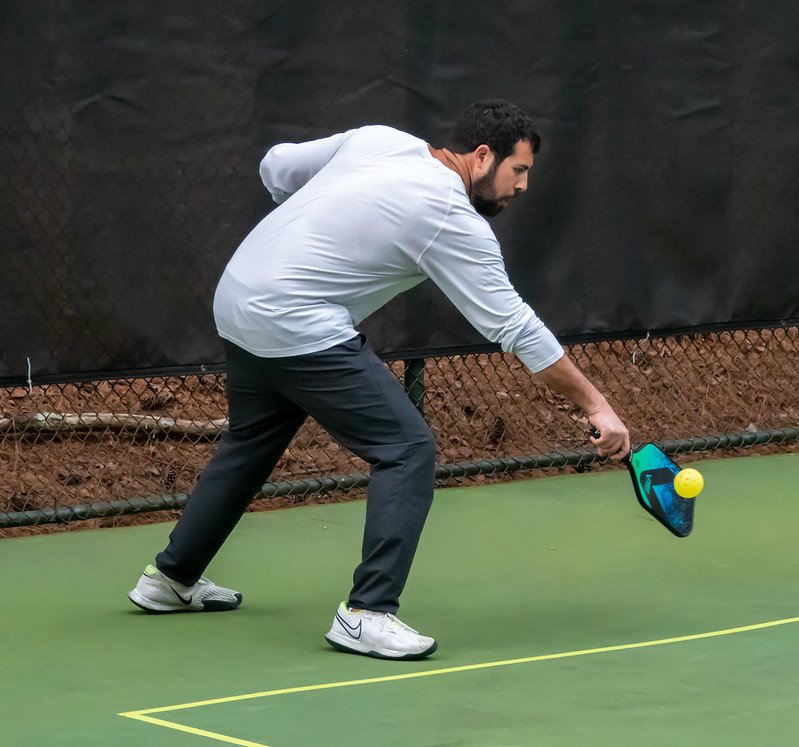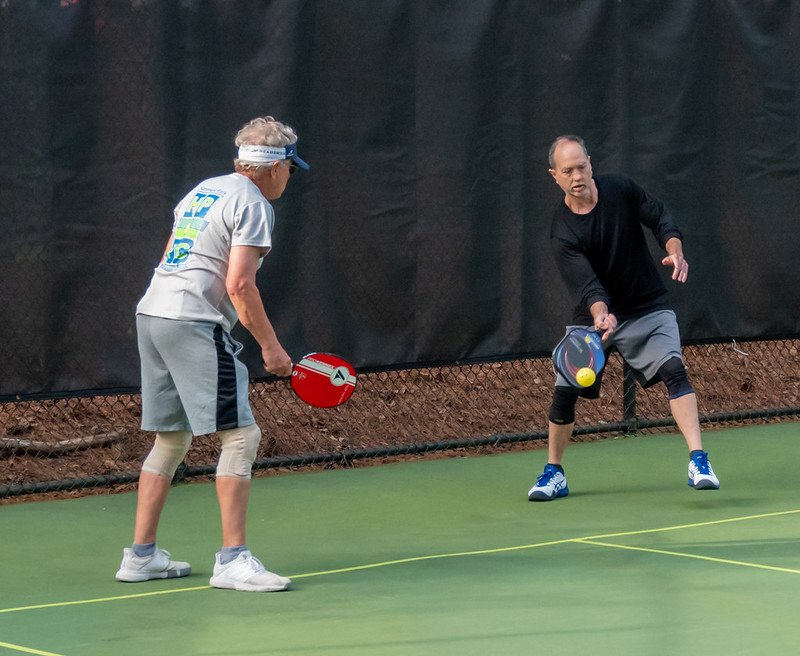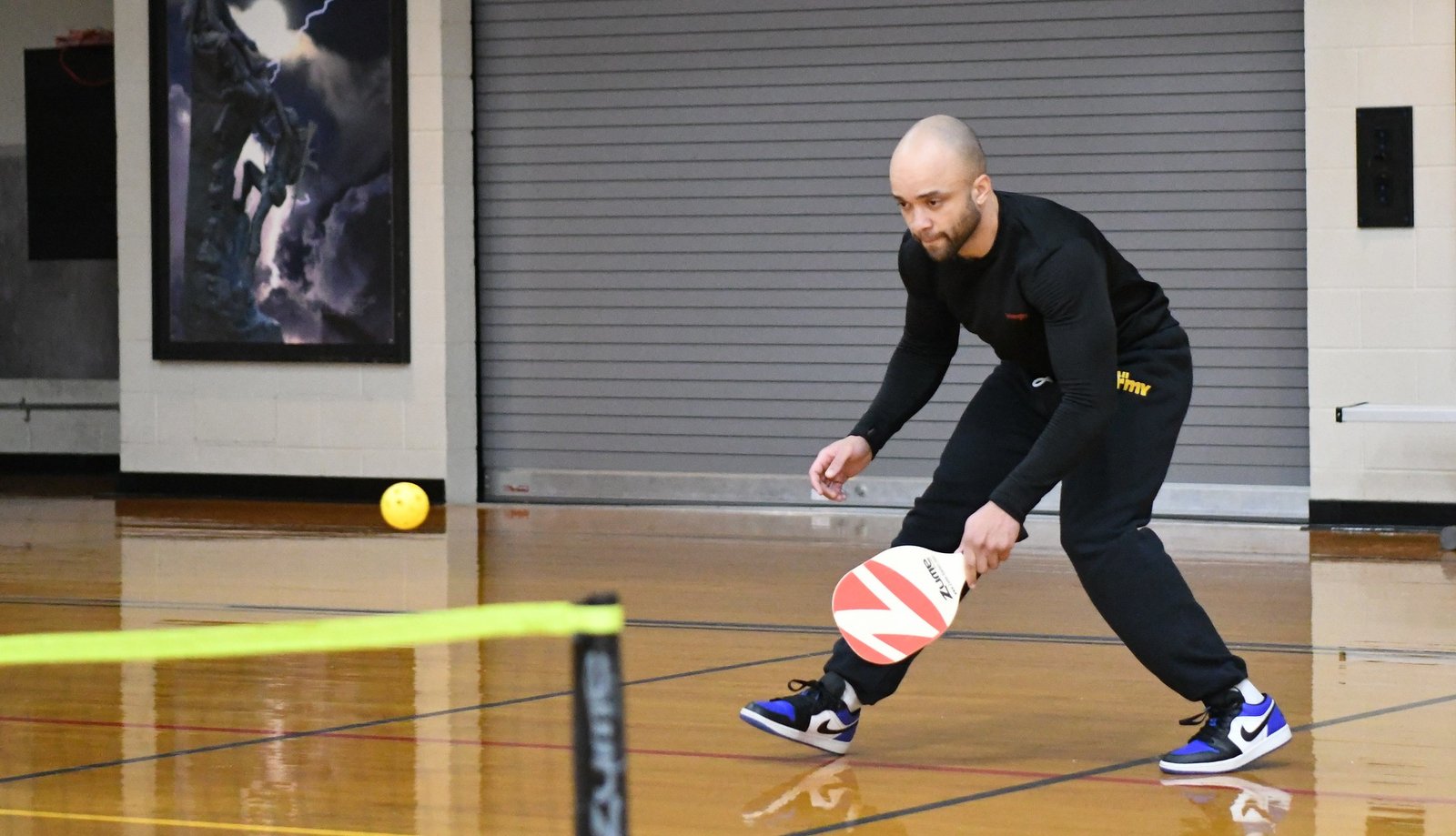Pickleball, often dubbed the fastest-growing sport in America, is a unique and captivating racquet sport that combines elements of tennis, badminton, and ping pong. While it’s widely known for its dynamic doubles matches, there’s another exciting dimension to this game – Pickleball Singles. In this introduction, we will delve into the world of Pickleball Singles, exploring the essence of the game, its scoring system, and what makes it such a thrilling solo endeavor.
In its singles format, pickleball is an exhilarating test of an individual’s skill, agility, and strategic prowess on the court. Unlike its more common counterpart, Pickleball Singles pits one player against another in a fast-paced showdown that demands mental acumen and physical finesse. While the rules largely mirror those of doubles, the game’s dynamics shift significantly in Pickleball Singles. The court becomes a canvas where one’s ability to control the game, anticipate the opponent’s moves, and execute precise shots takes center stage.
At its core, a Pickleball game, whether in singles or doubles, is played with a peculiar paddle and a lightweight, perforated plastic ball. The aim? To score points by sending the ball over the net and into the opponent’s court while navigating the strict boundaries and the non-volley zone, colloquially known as “the kitchen.” The beauty of Pickleball lies in its accessibility to players of all ages and skill levels, making it an inclusive and engaging pastime for everyone.
Understanding the scoring system is pivotal in any sport, and Pickleball is no exception. In a Pickleball game, the scoring is straightforward yet nuanced. Points are exclusively earned on the serving side, and a win typically requires reaching a predetermined number, often 11 or 15 points, while maintaining a lead of at least two points over the opponent. The serving rotation and fault rules add layers of strategy and excitement to the game, making every point a potential game-changer.
In Pickleball Singles, where every move and shot rests solely on one player’s shoulders, the stakes are high, and the intensity is unparalleled. Whether you’re a seasoned player or a newcomer to the sport, the challenge and thrill of Pickleball Singles are bound to keep you hooked. So, grab your paddle, step onto the court, and embark on an unforgettable journey of skill and strategy in Pickleball Singles.
Table of Contents
What Is a Pickleball Singles Game Exactly?
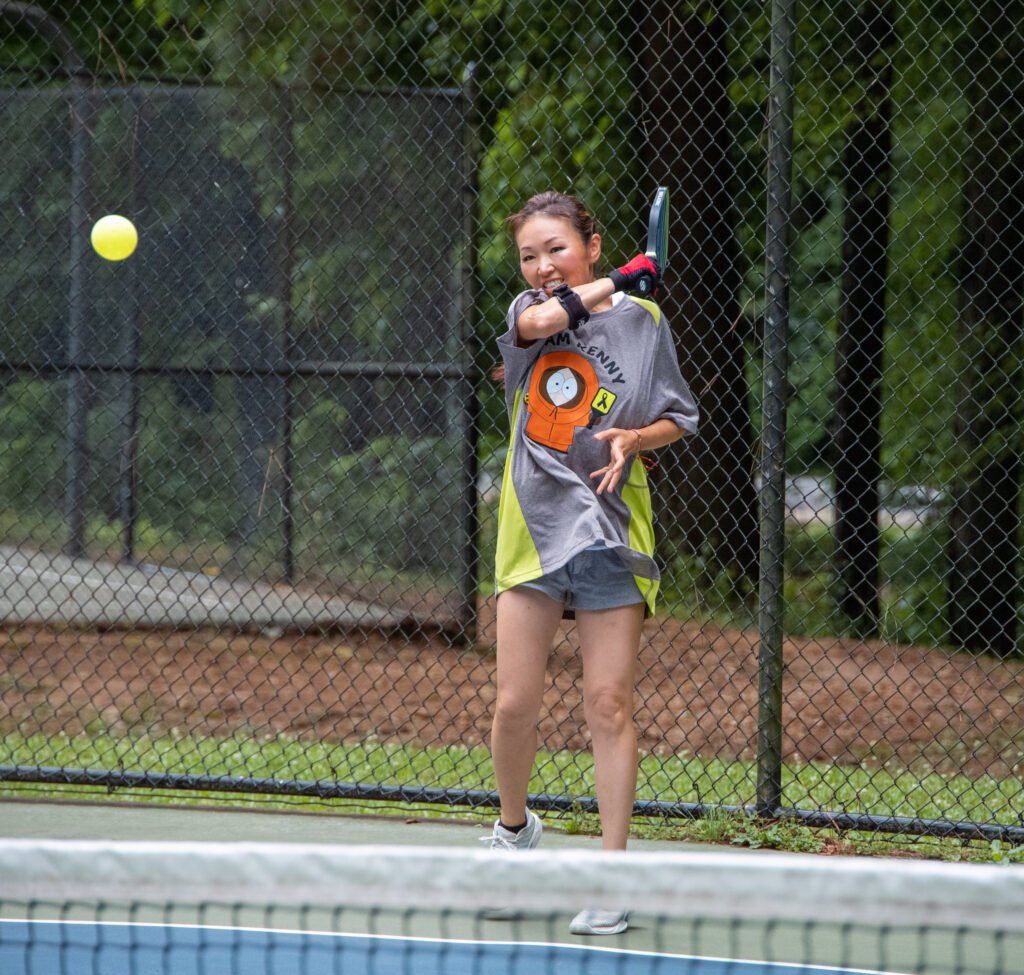
A singles game in pickleball is a variant of the sport where two players, one on each side of the net, compete against each other. Singles is a one-on-one contest, unlike pickleball doubles, which involves teams of two players on each side. Here’s a concise overview of what a singles game entails:
Court Configuration
A standard pickleball court for singles is 20 feet wide and 44 feet long. It is divided into two equal-sized service courts, each measuring 20 feet by 22 feet. A 7-foot non-volley zone (the kitchen) is on both sides of the net.
Serving
The game begins with a serve, and the server must serve diagonally to the opponent’s service court. The serve must clear the net and land within the diagonal court. The receiver allows the serve to bounce before returning it.
Rally and Scoring
Once the ball is in play, both players move around the court to hit the ball over the net. Points are scored when one player commits a fault, such as hitting the ball out of bounds, into the net, or violating the non-volley zone rule. A player can only score points when they are serving.
Rotation
In singles, players rotate less than in doubles. The server switches sides only when they score a point.
Winning
To win the game, a player must reach a predetermined number of points (usually 11 or 15) and lead by at least 2 points. A match can consist of a best-of-three or best-of-five games.
Singles play in pickleball emphasizes individual skill, agility, and strategy. It requires players to cover the entire court and make precise shots, making it a challenging and rewarding form of the sport. The strategy involves controlling the kitchen, exploiting your opponent’s weaknesses, and executing well-placed shots to secure points and win the game.
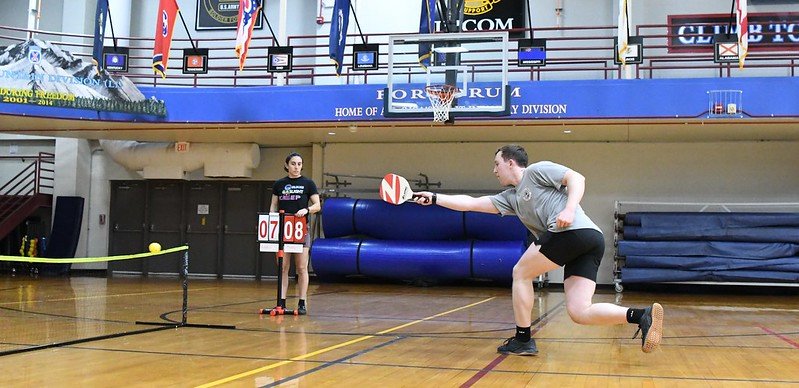
How is pickleball scoring done?
Pickleball scoring is a straightforward and easy-to-understand system that adds a competitive element to the game. The scoring is based on a rally system, and points can only be scored by the serving side. Here’s how pickleball scoring is done:
Scoring Method
Pickleball can be played to a predetermined number of points, typically 11 or 15, but sometimes even 21 in casual play. The game must be won by a margin of at least 2 points.
Serving Side
The serving side is determined at the beginning of the game, often through a coin toss or a rally. The serving side rotates when a point is scored.
Serve
The game starts with a serve. The server must stand behind the baseline, use an underhand motion, and strike the ball below the waist. The serve must clear the net and land in the diagonal service box on the opposite side of the court.
Points
Points are scored when the receiving side fails to successfully return the ball within the boundaries of the court, hits the ball out of bounds, or commits a fault (e.g., stepping into the non-volley zone and volleying the ball). Each successful rally results in one point for the serving side.
Rotation
In doubles play, players on the serving team will rotate positions each time they score a point. However, in singles play, there is no rotation of positions; the server only switches sides when they score a point.
Winning
To win the game, a player or team must reach the predetermined number of points (e.g., 11 or 15) and lead by at least 2 points. If both sides are tied at the predetermined winning score, the game continues until one side has a 2-point lead.
Pickleball scoring is designed to keep the game competitive and engaging while allowing players of all skill levels to enjoy the sport. It emphasizes strategy, precision, and consistency in gameplay.
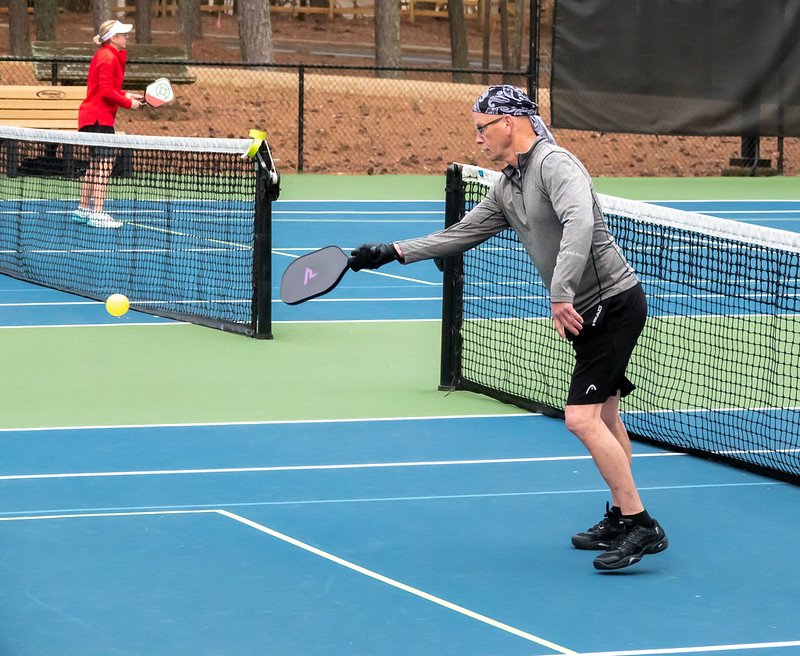
How to Play Pickleball Singles: A Comprehensive Guide
Pickleball is a fun and fast-paced racquet sport that can be played in both singles and doubles formats. In this response, I’ll provide a detailed guide on how to play pickleball singles:
Equipment
Pickleball Paddle
Pickleball paddles are an essential piece of equipment in the game, and they offer a wide range of options to cater to different player preferences. These paddles vary in shape, size, weight, grip circumference, and core materials. Selecting the right paddle that aligns with your playing style and skill level. Beginners may benefit from a paddle with a larger sweet spot, while advanced players prefer paddles with greater control and power.
Pickleball
The pickleball itself is a unique and integral component of the game. It closely resembles a Wiffle ball, featuring carefully positioned holes to influence its flight characteristics. It is imperative to use an officially approved pickleball for sanctioned play to ensure fairness and consistency in the game.
Pickleball Court
Pickleball is typically played on a court similar in size to a badminton court, measuring 20 feet in width and 44 feet in length for singles matches. A distinguishing feature of the pickleball court is the 7-foot non-volley zone, often called “the kitchen,” located on both sides of the net. This area has specific rules governing play and adds an additional layer of strategy to the game. Understanding court dimensions and the dynamics of the non-volley zone is essential for successful pickleball gameplay.
Scoring
In the thrilling sport of pickleball, scoring follows a specific set of rules to ensure fair competition and exciting gameplay. Typically, a pickleball match is played to either 11 or 15 points, and there’s a crucial stipulation: the winning side must secure a lead of at least 2 points over their opponent. This ensures that the victory is hard-fought and well-deserved.
One unique feature of pickleball scoring is that points can only be earned by the serving side. If you’re not the serving team, your goal is to regain the serve by successfully returning the ball and winning a rally.
In singles pickleball, there’s an exciting twist to the serving dynamics. When the server has an even number of points, they must serve from the right side of the court. Conversely, they serve from the left side when they have an odd number of points. This alternating serve placement keeps the game balanced and strategic, requiring players to adapt their approach based on the current score.
These scoring rules in pickleball add an extra layer of strategy and excitement to the game, making each point a valuable step toward victory.
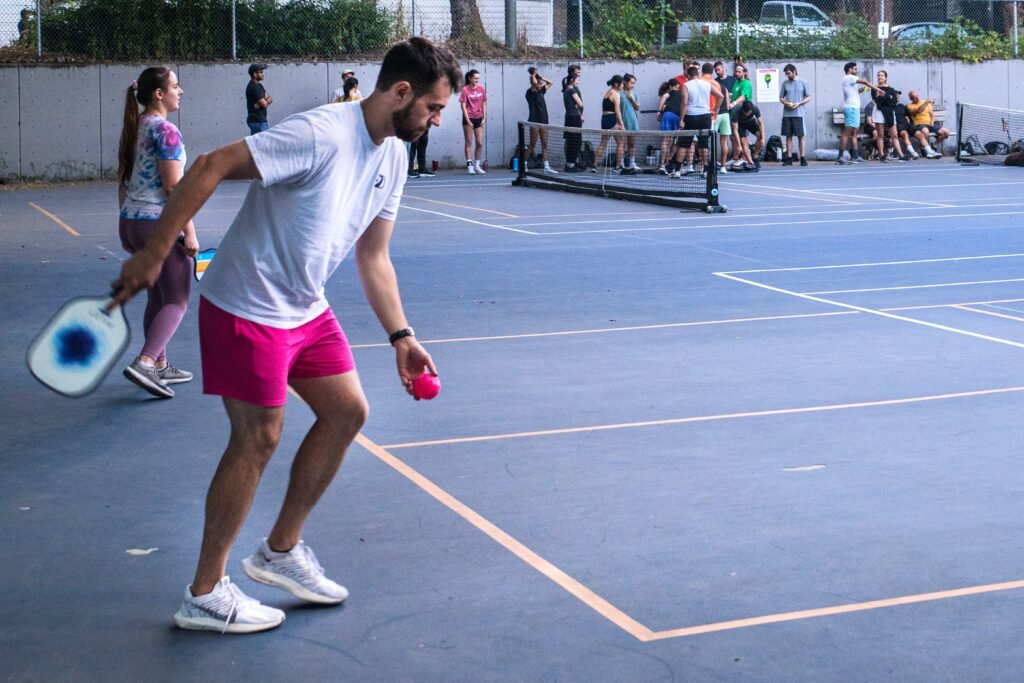
Starting the pickleball singles game
In the exciting world of pickleball singles, every match begins with a sense of anticipation, often defined by a coin toss or an energetic rally between the players. This ritual is not just about chance; it sets the stage for an engaging bout. The winner of this initial exchange earns the privilege of becoming the first server.
As the first server steps onto the court, they take their position on the right side of the baseline. This placement is crucial, as it sets the trajectory for the match ahead. Here, they prepare to execute their serve with precision.
But the serve in pickleball singles comes with its own set of rules and restrictions. To ensure fairness and consistency, the server must keep at least one foot planted behind the baseline during the serve. This rule adds an element of challenge and maintains a level playing field for both competitors.
Starting a pickleball singles match with these formalities adds an air of anticipation and underscores the importance of strategy and sportsmanship in this fast-paced sport.
Serve
In pickleball singles, the serve is a crucial element of the game, and it’s essential to understand the rules and techniques associated with it. The serve in pickleball singles is executed underhand, emphasizing control and precision. The server must stand behind the baseline and ensure that the serve clears the net and lands in the diagonal service box on the opposite side of the court. This placement of the serve is strategic, aiming to make it difficult for the opponent to return effectively.
Unlike other racquet sports, pickleball allows only one attempt at the serve, meaning there are no second serves as in tennis. This adds an element of pressure to the server, as a fault on the serve results in losing the serve to the opponent.
After the serve, the receiver must let the ball bounce once before returning it. This rule promotes a balanced start to the rally and prevents overly aggressive returns, ensuring fair play and an exciting game. Mastering the serve is a fundamental skill in pickleball singles, as it sets the tone for each point and can be a significant advantage when executed with precision and strategy.
Gameplay
After the serve, the dynamics of a pickleball singles match change as both players engage in a strategic battle from the baseline. This period between the serve and the ball clearing the non-volley zone, commonly called the “kitchen,” is crucial. During this phase, players are required to exercise precise control over their shots and court positioning.
As the rally unfolds, players can move anywhere on the court. This flexibility allows them to adapt to the constantly changing dynamics of the game, adjusting their positioning to set up effective shots and anticipate their opponent’s moves.
The non-volley zone, or “kitchen,” adds an intriguing dimension to singles play. Within this area, players are prohibited from hitting the ball out of the air, adding an element of finesse and careful footwork to the game. Navigating the kitchen’s boundaries while maximizing scoring opportunities is a crucial challenge for pickleball singles players. Mastering this game aspect can significantly enhance one’s performance and overall enjoyment of the sport.
Scoring and Rotation
In a game of singles pickleball, points are earned when your opponent commits a fault, including various infractions such as hitting the ball out of bounds, into the net or failing to let the ball bounce before returning it. These faults result in point gains for the player who did not commit the error, allowing for a dynamic and competitive scoring system.
Unlike doubles pickleball, where players rotate positions during each turn, singles play follows a different pattern. In singles, there is no side rotation between points. Instead, the server switches sides only when it successfully scores a point. This means that the server alternates serving from the right and left sides of the court as the game progresses, ensuring an equal opportunity for both players to adapt to different court angles and conditions.
This aspect of singles play adds an extra layer of strategy and challenge to the game, as players must adjust their tactics based on their position and the score, making singles pickleball a thrilling and engaging sport for enthusiasts of all levels.

Faults
In pickleball, as in any sport, it’s crucial to understand and avoid common faults to ensure fair and enjoyable gameplay. Here are some of the most frequent errors that players should be aware of:
Failure to Clear the Net with the Serve
To start the point, the serve must clear the net and land within the diagonal service box on the opponent’s side. A serve that doesn’t clear the net is considered a fault.
Not Allowing the Ball to Bounce
After the serve, both the server and the receiver must let the ball bounce once before attempting to hit it. Attempting to volley (hitting the ball in the air) before it bounces is a fault.
Stepping into the Non-Volley Zone (Kitchen) for a Volley
The non-volley zone, also known as the kitchen, is the area near the net where players cannot volley the ball. Stepping into this zone and hitting a volley results in a fault.
Hitting the Ball Out of Bounds
Hitting the ball outside the boundaries of the court results in a fault. It’s essential to maintain accuracy and keep the ball in play.
Double-Bouncing the Ball
Hitting the ball twice before it clears the net is a fault. This typically happens when a player inadvertently hits the ball on the rebound from their initial shot.
Understanding and avoiding these common faults is essential for fair and competitive pickleball play. Complying with the rules not only ensures a level playing field but also contributes to the game’s overall enjoyment for both players and spectators.

Winning the Game
In a game of pickleball singles, the objective is to reach a predetermined number of points first, commonly set at either 11 or 15 points. However, winning isn’t just about reaching this point threshold; there’s an additional requirement. To secure victory, a player must lead by a margin of at least 2 points over their opponent. This stipulation ensures that the winner demonstrates not only consistency but also a level of dominance in the game.
Furthermore, the format of a pickleball singles match can vary based on player preferences or tournament rules. Most commonly, players agree to play a best-of-three games format, where the first player to win two games emerges victorious. This format adds an element of endurance and adaptability to the game, as players may need to adjust their strategies over multiple games. For more extended matches and a greater test of skill and stamina, some players opt for a best-of-five games format, offering more opportunities for competition and excitement. Ultimately, the choice of format should align with the players’ preferences and available time.
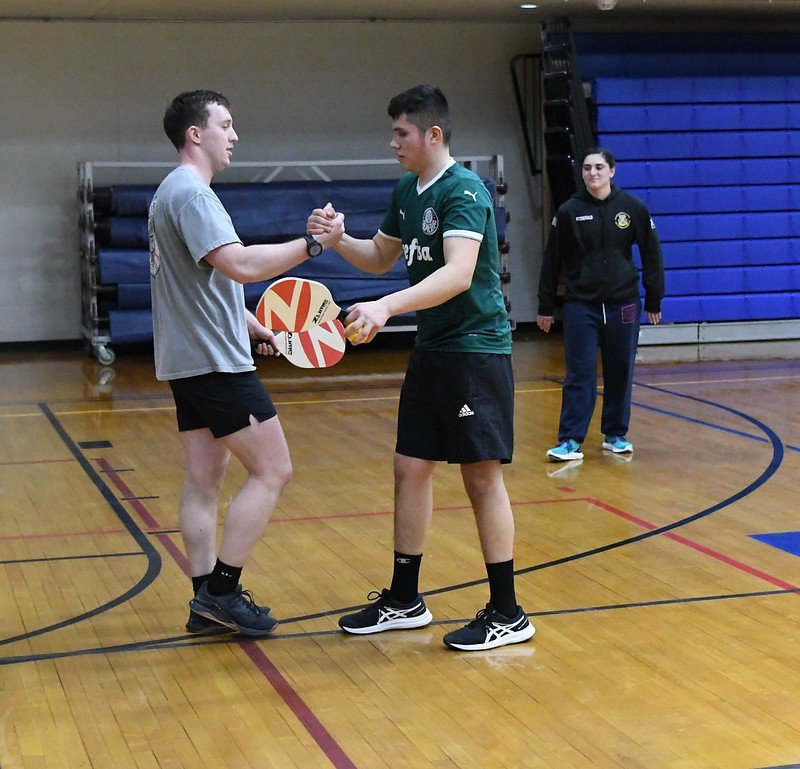
Etiquette
In the world of sports, integrity and sportsmanship are values that hold great importance. Pickleball, a sport known for its camaraderie and friendly competition, is no exception. When engaging in a game of pickleball singles, it’s crucial to adhere to certain etiquette guidelines to ensure a positive and respectful experience for both you and your opponent.
First and foremost, always be courteous and respectful to your opponent. Remember that you’re both there to enjoy the game and improve your skills. A friendly attitude fosters a more enjoyable atmosphere on the court.
Furthermore, it’s customary to call out the score before each serve. Clear communication helps prevent confusion and ensures that both players are on the same page regarding the current score, making the game more fair and transparent.
Lastly, avoid making excessive noise or movements that may distract your opponent. Concentration is key in pickleball, and any unnecessary disruptions can disrupt the flow of the game and potentially affect the outcome.
By following these guidelines, you demonstrate good sportsmanship and contribute to the overall enjoyment of the sport for everyone involved. Pickleball is not just about competition; it’s also about building connections and fostering a sense of community among players.
Pickleball singles offer an exhilarating and physically demanding challenge. Elevating your skills requires dedicated practice in serving precision, volley mastery, and groundstroke finesse. Yet, it’s not just about technical proficiency; grasping the nuances of court positioning and the art of strategic shot placement can elevate your game to new heights. As you embark on this exciting journey, remember that pickleball is not just a sport—it’s a dynamic dance of skill and strategy. So, dive into the game, relish the competition, and savor every moment on the court. The world of pickleball singles awaits your exploration and enjoyment!



